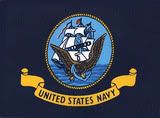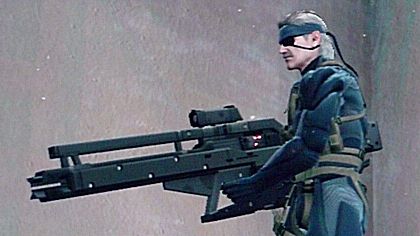The US Navy is now up to firing a projectile with 33mj of force. If the gun can be weaponized, it can hit targets over 100 miles away.
http://www.foxnews.com/scitech/2010/12/10/navy-railgun-shoots-bullets-electromagnet/
A theoretical dream for decades, the railgun is unlike any other weapon used in warfare. And it's quite real too, as the U.S. Navy has proven in a record-setting test today in Dahlgren, VA.
Rather than relying on a explosion to fire a projectile, the technology uses an electomagnetic current to accelerate a non-explosive bullet at several times the speed of sound. The conductive projectile zips along a set of electrically charged parallel rails and out of the barrel at speeds up to Mach 7.
The result: a weapon that can hit a target 100 miles or more away within minutes.
"It's an over-used term, but it really changes several games," Rear Admiral Nevin P. Carr, Jr., the chief of Naval Research, told FoxNews.com prior to the test.
For a generation raised on shoot-'em-up video games, the word "railgun" invokes sci-fi images of an impossibly destructive weapon annihilating monsters and aliens. But the railgun is nonetheless very real.
An electromagnetic railgun offers a velocity previously unattainable in a conventional weapon, speeds that are incredibly powerful on their own. In fact, since the projectile doesn't have any explosives itself, it relies upon that kinetic energy to do damage. And at 11 a.m. today, the Navy produced a 33-megajoule firing -- more than three times the previous record set by the Navy in 2008.
"It bursts radially, but it's hard to quantify," said Roger Ellis, electromagnetic railgun program manager with the Office of Naval Research. To convey a sense of just how much damage, Ellis told FoxNews.com that the big guns on the deck of a warship are measured by their muzzle energy in megajoules. A single megajoule is roughly equivalent to a 1-ton car traveling at 100 mph. Multiple that by 33 and you get a picture of what would happen when such a weapon hits a target.
Ellis says the Navy has invested about $211 million in the program since 2005, since the railgun provides many significant advantages over convention weapons. For one thing, a railgun offers 2 to 3 times the velocity of a conventional big gun, so that it can hit its target within 6 minutes. By contrast, a guided cruise missile travels at subsonic speeds, meaning that the intended target could be gone by the time it reaches its destination.
Furthermore, current U.S. Navy guns can only reach targets about 13 miles away. The railgun being tested today could reach an enemy 100 miles away. And with current GPS guidance systems it could do so with pinpoint accuracy. The Navy hopes to eventually extend the range beyond 200 miles.
"We're also eliminating explosives from the ship, which brings significant safety benefits and logistical benefits," Ellis said. In other words, there is less danger of an unintended explosion onboard, particularly should such a vessel come under attack.
Indeed, a railgun could be used to inflict just such harm on another vessel.
Admiral Carr, who calls the railgun a "disruptive technology," said that not only would a railgun-equipped ship have to carry few if any large explosive warheads, but it could use its enemies own warheads against them. He envisions being able to aim a railgun directly at a magazine on an enemy ship and "let his explosives be your explosives."
There's also a cost and logistical benefit associated with railguns. For example, a single Tomahawk cruise missile costs roughly $600,000. A non-explosive guided railgun projectile could cost much less. And a ship could carry many more, reducing the logistical problems of delivering more weapons to a ship in battle. For these reasons, Admiral Carr sees the railgun as even changing the strategic and tactical assumptions of warfare in the future.
The Navy still has a distance to go, however, before the railgun test becomes a working onboard weapon. Technically, Ellis says they've already overcome several hurdles. The guns themselves generate a terrific amount of heat -- enough to melt the rails inside the barrel -- and power -- enough to force the rails apart, destroying the gun and the barrel in the process.
The projectile is no cannon ball, either. At speeds well above the sound barrier, aerodynamics and special materials must be considered so that it isn't destroyed coming out of the barrel or by heat as it travels at such terrific speeds.
Then there's question of electrical requirements. Up until recently, those requirements simply weren't practical. However, the naval researchers believe they can solve that issue using newer Navy ships and capacitors to build up the charge necessary to blast a railgun projectile out at supersonic speeds. Ellis says they hope to be able to shoot 6 to 12 rounds per minute, "but we're not there yet."
So when will the railgun become a working weapon? Both Ellis and Carr expect fully functional railguns on the decks of U.S. Navy ships in the 2025 time frame.
Read more: http://www.foxnews.com/scitech/2010/12/10/navy-railgun-shoots-bullets-electromagnet/#ixzz17kMDHrRP
Back from the dead, I'm afraid.
















































































